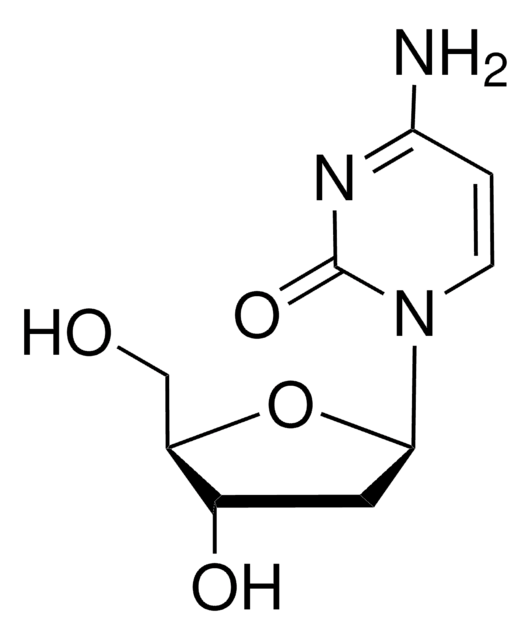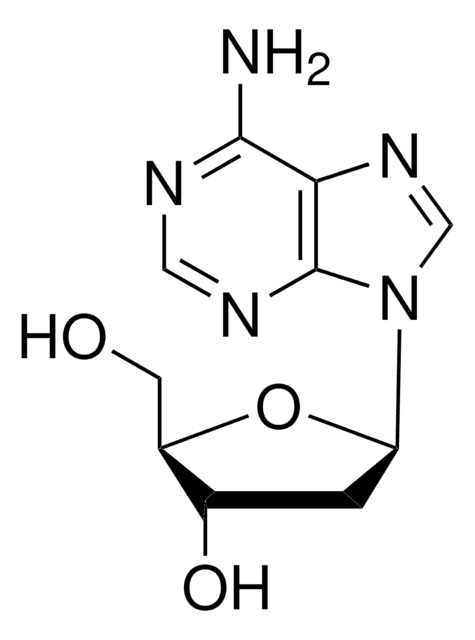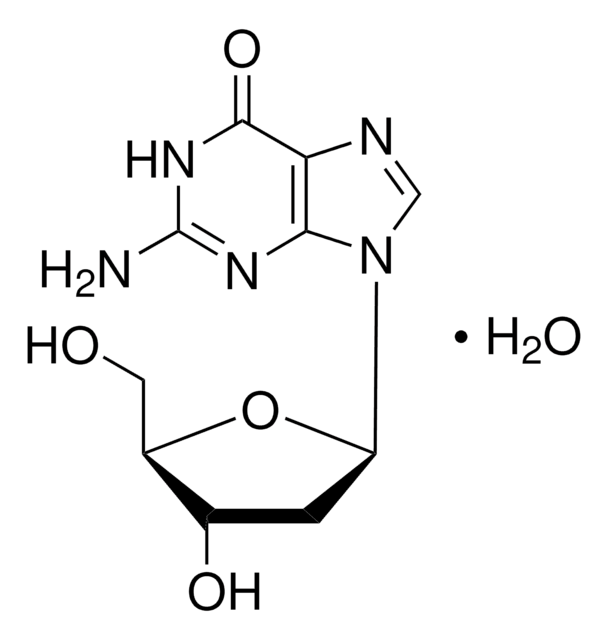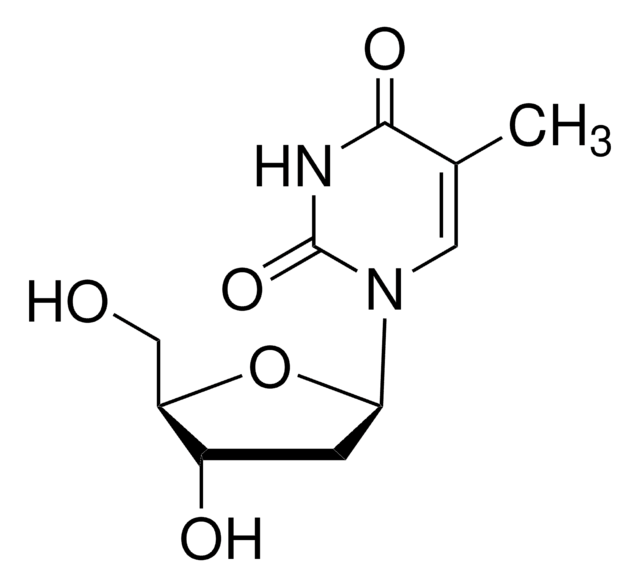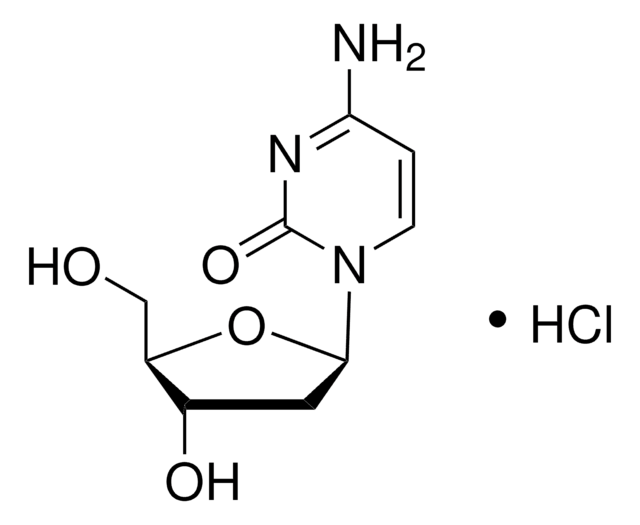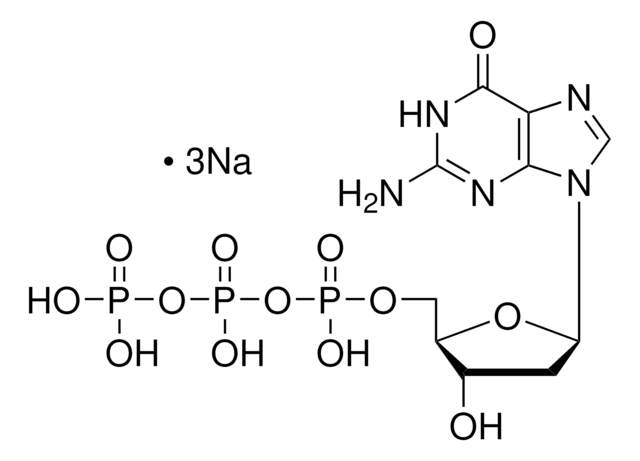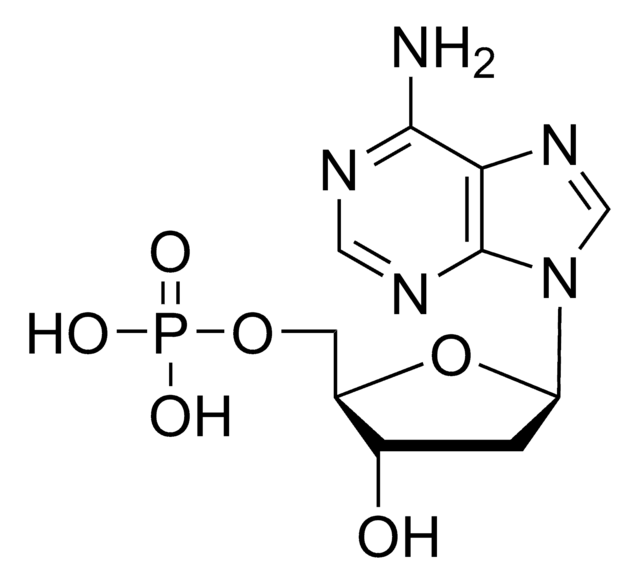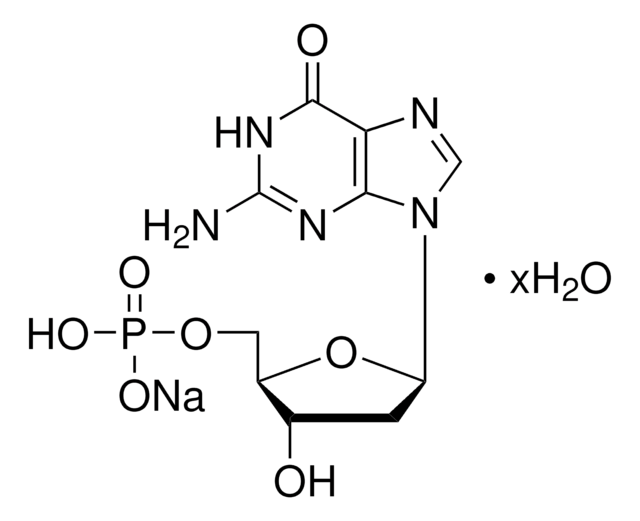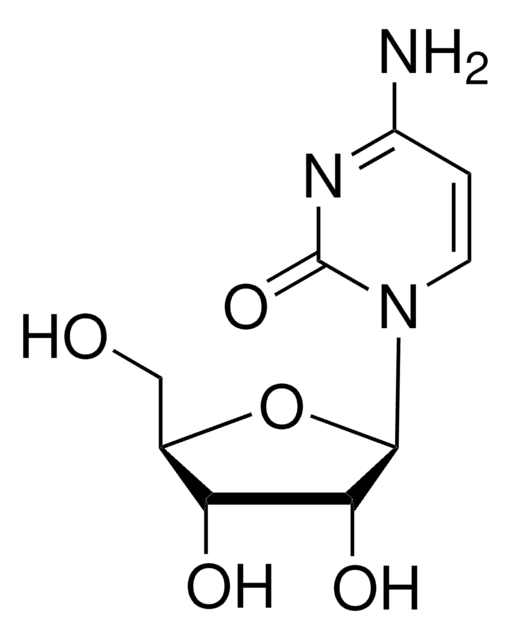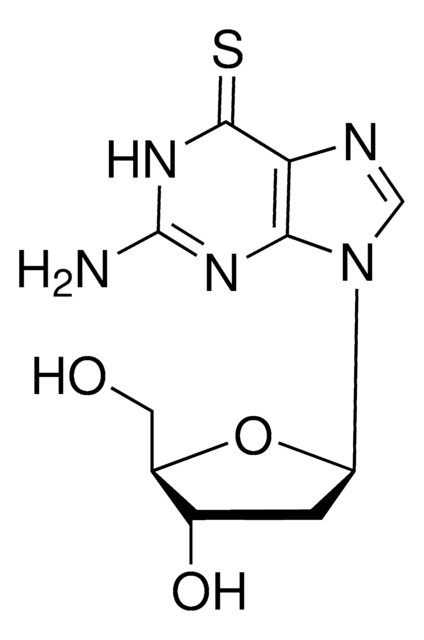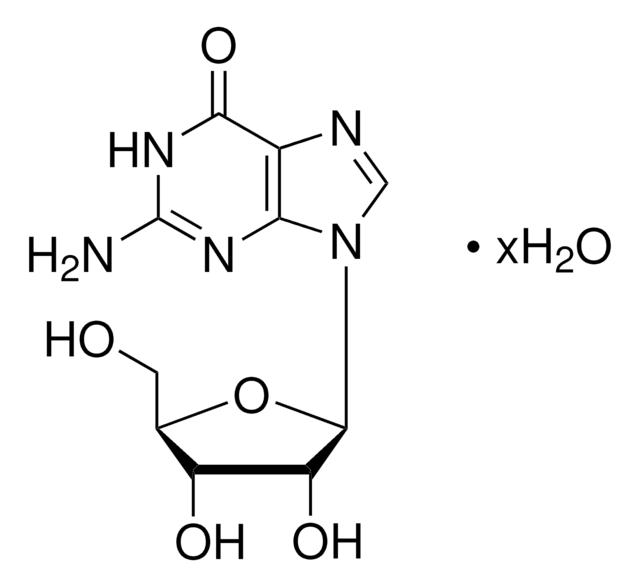D7145
2′-Deoxyguanosine monohydrate
99-100%
Synonym(s):
2′-Deoxyguanosine hydrate, 9-(2-Deoxy-β-D-ribofuranosyl)guanine, Guanine-2′-deoxyriboside
About This Item
Recommended Products
biological source
synthetic (organic)
Quality Level
Assay
99-100%
form
powder
solubility
1 M NH4OH: 50 mg/mL, clear, colorless
SMILES string
O.NC1=Nc2c(ncn2[C@H]3C[C@H](O)[C@@H](CO)O3)C(=O)N1
InChI
1S/C10H13N5O4.H2O/c11-10-13-8-7(9(18)14-10)12-3-15(8)6-1-4(17)5(2-16)19-6;/h3-6,16-17H,1-2H2,(H3,11,13,14,18);1H2/t4-,5+,6+;/m0./s1
InChI key
LZSCQUCOIRGCEJ-FPKZOZHISA-N
Looking for similar products? Visit Product Comparison Guide
Related Categories
Application
- to study its effect on mitochondrial DNA copy number in deoxyguanosine kinase (dguok) mutant zebrafish,
- in tissue culture medium for deoxyribonucleotide triphosphate (dNTP) synthesis,
- in RPMI (Roswell Park Memorial Institute)-1640 medium to eliminate the endogenous thymocytes
Biochem/physiol Actions
Storage Class Code
11 - Combustible Solids
WGK
WGK 3
Flash Point(F)
Not applicable
Flash Point(C)
Not applicable
Certificates of Analysis (COA)
Search for Certificates of Analysis (COA) by entering the products Lot/Batch Number. Lot and Batch Numbers can be found on a product’s label following the words ‘Lot’ or ‘Batch’.
Already Own This Product?
Find documentation for the products that you have recently purchased in the Document Library.
Customers Also Viewed
Our team of scientists has experience in all areas of research including Life Science, Material Science, Chemical Synthesis, Chromatography, Analytical and many others.
Contact Technical Service